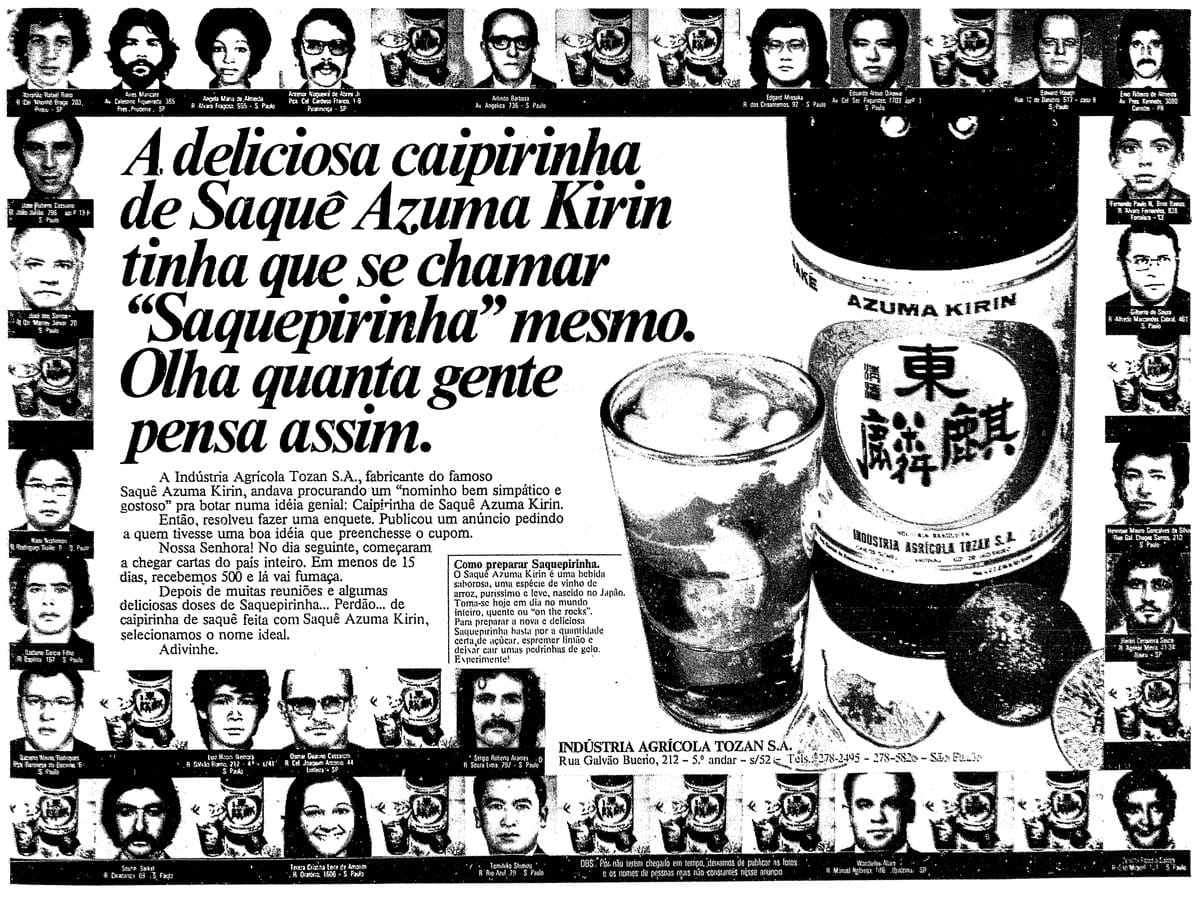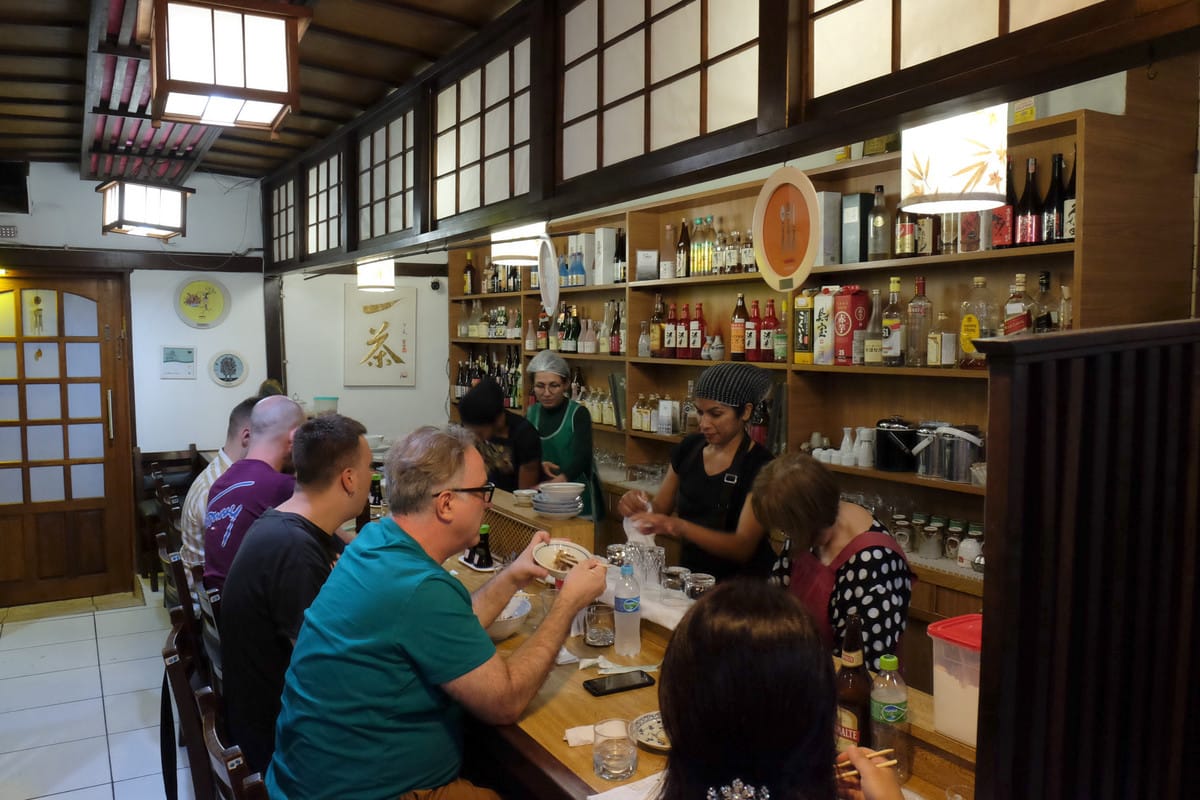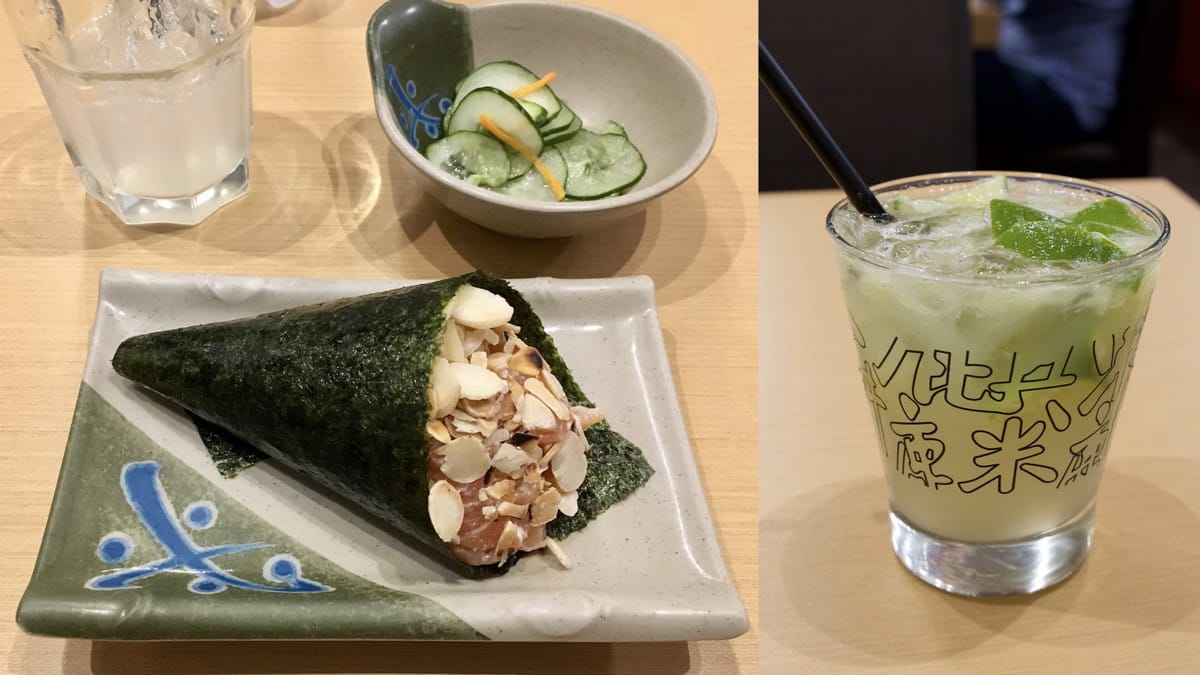Sake and Japanese Cuisine in the Brazilian Culinary Culture
My sake journey to Brazil made me realize the fantastic contact between two culinary cultures.

Soon after I started to do sake-related work, I learned there were sake breweries in Brazil, which drove me to a sake journey to the country. The journey began with a visit to Azuma Kirin Brewery (present Kikkoman do Brasil) in Campinas on the outskirts of São Paulo.

The brewery was established in 1934 to produce the most appropriate alcoholic beverage for Japanese immigrants familiar with rice and to enrich their lives. Another purpose was to solve the problem of abuse of pinga, a local distilled beverage made of sugar cane juice.
During the brewery tour, I was surprised to learn that the koji-making process was hand-crafted. Steaming rice, cooling it, and koji-making were completely artisanal. Additionally, I felt the excellent family atmosphere in the brewery. A young brewer said his family member has worked through three generations.

The firm pioneered sake brewing in Brazil and made tremendous efforts to popularize sake cocktails called saquerinha or saquerita. It had already achieved promotions on sake cocktails and warmed sake in the 1960s in department stores. According to Paulista Shinbum (August 6th, 1960), the newspaper for the Nikkei (Japanese descendants) community, Brazilian customers enjoyed cocktails rather than warmed saké. In 1975, it also advertised sake cocktails on Folha de S.Paulo, a newspaper renowned for cultural topics.
Later in the 2000s, it started to provide cocktail recipes and special glasses with the brand mark to popularize saquerinhas. As a result, the firm doubled its factory and increased its production.

At almost the same time in the 2000s, the izakaya boom arrived in Brazil. Then, of course, a global boom also influenced the country. Still, Izakaya culture in Brazil is unique: the immigrants established and developed Japanese food culture, and the new wave of Japanese cuisine was brought by dekassegui (re-migrant workers of Japanese descendants to Japan). Unlike the Japanese restaurants til the 1980s, the majority of the customers are non-nikkeis.

While tasting sake and food in some izakayas, I experienced the atmosphere and liked it so much. Temaki, based on temaki sushi (hand-rolled sushi), is now a popular fast food in Brazil. Brazilian people love it. I visited Temekeria e Cia, a fast food chain, and enjoyed temaki and saquerita. The temaki served there was a giant compared to Japanese ones, and the ingredients were different: cream cheese, fruits, and almonds. Nevertheless, it was so tasteful and paired well with the sake cocktail with lime.
Temaki has a long history in the Nikkei communities and was eaten at home; however, it was only in the 1990s that restaurants started serving it. In 1997, Caderno Guia da Folha, a prominent gourmet guide, introduced a restaurant Shizen, in the district of Vila Madalena in São Paulo. In the restaurant, temaki was served as self-roll sushi, just like what the Nikkei people enjoyed at home.
Later in the 1990s, temaki spread fast food to shopping centers and other places. It has already become an innovative dish with salmon, fruits, and cream cheese. The customers were non-Nikkeis, and young people enjoyed it as a quick light meal before going out, not to enjoy exotic food.

I gradually became excited as I bit the temaki and sipped sake cocktails. Both have origins in Japan but are already blended into the Brazilian culinary culture and developed in it.
Nonetheless, Japanese food is not a property of Japanese people. Authentic Japanese food is not limited to Japanese food cooked and served in Japan. Everyone in Japan and outside Japan is likely to enjoy, devise, and spread Japanese food. When multiple cultures come into contact, there will be an evolution.
I felt so happy to encounter temaki and take cocktails; the food culture originated in Japan, developed in Brazil, and is loved by Brazilian people.
I want to express my gratitude to Mr. Hideyuki Ozaki, the president of Kikkoman do Brasil (former Azuma Kirin), and the people in the brewery. I want to thank Ms. Sonia Yamane, who guided me to Izakayas in São Paulo. I am also grateful to countless people in Brazil and Japan for their insights into the Japanese culinary culture in Brazil.
References
- Mori, Kōichi. 2010. ブラジル日本移民・日系人の食生活と日系食文化の歴史 [History of Diet of the Japanese Immigrants in Brazil and Nikkeis and Nikkei Culinary Culture]. ブラジル日本移民百周年記念協会 編 [Association of Commemoration of the Centenary of Japanese Immigration to Brazil, ed.]. ブラジル日本移民百年史 第3巻 [Hundred Years' History of the Japanese Immigration to Brazil, Vol. 3]. Tokyo: Fūkyō-sha.
- Takahashi, Jo. 2014. Izakaya: por dentro dos botecos japoneses [Izakaya: inside the Japanese pubs]. São Paulo: Editora Melhoramentos.
- Sendai Branch of Japan External Trade Organization (JETRO). 2022. ブラジルにおける日本酒市場調査 [Sake Market Research in Brazil].
This essay was translated by the author from the article "ブラジル食文化の中で発展する日本食 [Japanese Cuisine Evolving in the Brazilian Culinary Culture]" in the Bulletin of the Japanese-Brazilian Association, No.996 (Autumn, 2022). I am grateful to the association for the generous permission for the translation.
